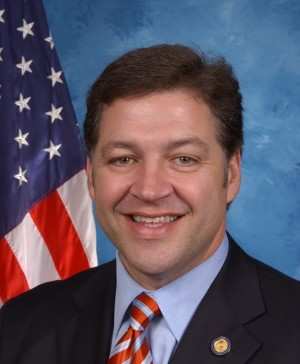Thu, Jan 21, 2016
Cost, Efficiency, & Modernization Expected Goals All Missed, According To Report
The Department of Transportation Inspector General has released a scathing report outlining numerous shortcomings of the FAA's efforts to implement reforms intended to help the agency operate more effectively and efficiently, improve the delivery of air traffic services, and modernize the U.S. air traffic control system.

The report finds that FAA’s efforts have fallen short of anticipated cost savings and operational efficiencies, as well as in improving the delivery of new technologies and capabilities.
“This report shows that the FAA simply isn’t suited to successfully modernize our Nation’s antiquated air traffic control system,” said Transportation and Infrastructure Committee Chairman Bill Shuster (R-PA) (pictured). “Over two decades of FAA personnel, organizational, and acquisition reforms have failed to slow the agency’s cost growth, improve its productivity, or improve its performance in modernizing the system. The FAA remains a vast government bureaucracy, not a high-tech service provider. It’s clear from the DOT IG’s findings that we need transformational FAA reform if we are going to have a safe, efficient, 21st century aviation system.”
The Inspector General’s report, requested by the leadership of the House Transportation Committee and its Aviation Subcommittee, says that although the FAA has implemented performance-based compensation systems, established the Air Traffic Organization (ATO), contracted out flight service stations operations, and reorganized multiple times over the years, costs continue to rise while operational productivity has declined. The FAA has also missed opportunities to complete large-scale facility consolidations that would maximize operations, improve the flow of air traffic, avoid the cost of maintaining aging facilities and facilitate the transition to NextGen capabilities.
Furthermore, major FAA air traffic control modernization projects continue to experience problems that delay the introduction of new technologies, postpone benefits to system users, and defer the retirement of costly legacy systems.
The Inspector General found that several underlying and systemic issues, including overambitious plans, shifting requirements, software development problems, ineffective contract and program management, and unreliable cost and schedule estimates, impact FAA’s ability to introduce new technologies and capabilities that are critical to transitioning to NextGen.
(Source: House Transportation Committee news release. Image from file)
More News
Also: Netherlands Donates 18 F16s, 2 737s Collide On Ramp, E-7 Wedgetail Cut, AgEagle's 100th In S Korea The Pilot and Aircraft Privacy Act was introduced in the House by Represent>[...]
Pilot Also Reported That Due To A Fuel Leak, The Auxiliary Fuel Tanks Were Not Used On June 4, 2025, at 13:41 eastern daylight time, a Piper PA-23, N2109P, was substantially damage>[...]
Have A Story That NEEDS To Be Featured On Aero-News? Here’s How To Submit A Story To Our Team Some of the greatest new stories ANN has ever covered have been submitted by our>[...]
From 2023 (YouTube Edition): Reflections on War’s Collective Lessons and Cyclical Nature The exigencies of war ought be colorblind. Inane social-constructs the likes of racis>[...]
What Goes Around, May Yet Come Back Around, Klyde FMI: www.klydemorris.com>[...]
 Airborne 06.30.25: US v ADS-B Misuse, Natl STOL Fire, Volocopter Resumes
Airborne 06.30.25: US v ADS-B Misuse, Natl STOL Fire, Volocopter Resumes NTSB Prelim: Piper PA-23
NTSB Prelim: Piper PA-23 ANN FAQ: Submit a News Story!
ANN FAQ: Submit a News Story! Classic Aero-TV: One Mans Vietnam
Classic Aero-TV: One Mans Vietnam Klyde Morris (06.30.25)
Klyde Morris (06.30.25)



